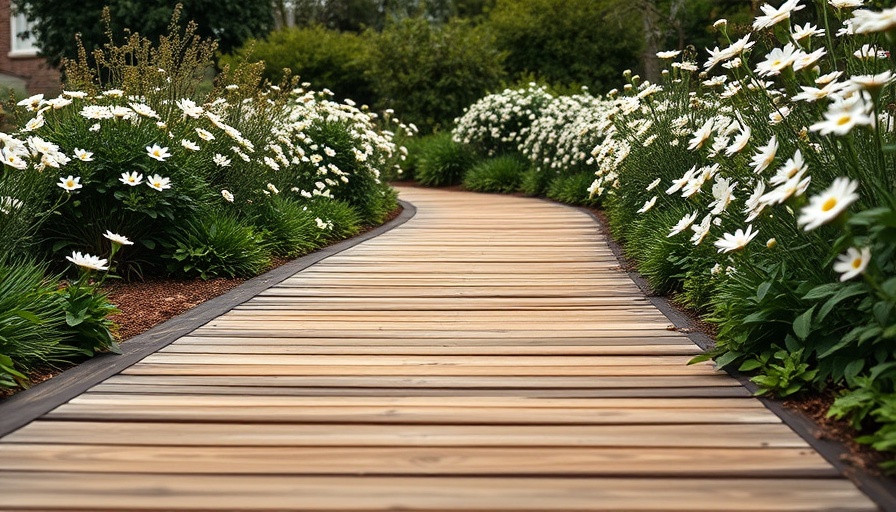
Transform Your Outdoor Space: Building Budget Friendly Paths
In a world where DIY projects often seem overwhelming, particularly in outdoor spaces, one challenge stands out: how to create a beautiful and functional path without breaking the bank. Whether you're looking to enhance your garden or simply want to ensure easy access to your shed, a well-designed path can transform dull landscaping into an inviting space. By just adding a few simple materials and a little creativity, you can achieve stunning results.
In 'Building Sleeper Boardwalk On A Budget', the discussion dives into practical tips for creating an affordable garden pathway, exploring key insights that sparked deeper analysis on our end.
Why Wooden Boardwalks Work Wonders
Wooden paths, like the ones made from sleepers demonstrated in the video 'Building Sleeper Boardwalk On A Budget', are practical and aesthetically pleasing. They not only serve as a functional pathway but can also create an air of sophistication. Sleepers, which can be easily sourced and are often affordable, allow for minimal waste and are strong enough to endure foot traffic and wheelbarrows alike. The natural look of wood harmonizes beautifully with gardens, making it an ideal choice for garden paths.
Step-by-Step Guide To Create Your Path
So, how can you achieve a similar transformation? Start by gathering materials such as timber sleepers and some road base. Set up a string line for guidance, ensuring your path remains straight. After leveling the ground, place the sleepers as the base. They can be painted or stained prior to installation for easier application, promoting durability while enhancing aesthetics. Then, lay out the path with alternating designs to keep it visually interesting.
Gardening Benefits of Pathways
When paths are well-designed, they serve functional purposes such as guiding foot traffic and delineating garden spaces. Additionally, they contribute to garden maintenance by allowing easier access for watering, weeding, and caring for plants. Incorporating mulching and planting indigenous flora alongside paths can significantly enhance the overall visual appeal of your outdoor area. Native violets or lomandra are excellent choices that provide beauty and benefit to local wildlife.
Incorporating Greenery for Impact
Once your path is laid down, consider the incorporation of flower beds or native plants alongside it. This not only adds color but ties together your landscaping. A butterfly garden or themed flower borders can significantly enhance your yard's charm while fostering local biodiversity, making it a haven for pollinators and beneficial insects.
Future Trends in Outdoor Landscaping
As sustainability becomes a significant focus globally, the practices around garden design shift as well. Eco-friendly materials such as reclaimed wood or sustainably sourced sleepers promote responsible gardening while maintaining aesthetics. Furthermore, embracing organic gardening principles encourages a harmonious relationship with nature.
Maximizing Space and Encouraging Accessibility
In many instances, modern gardens are designed to maximize space efficiently. When creating pathways, the idea isn't just about beauty; it also facilitates accessibility across outdoor areas, especially for those with mobility issues. Consider wider paths and planting flowers that complement each other without overwhelming the space to inspire joy and comfort.
Conclusion: Empower Your Garden Transformation
The process of building a pathway in your garden can lead to an expansive transformation—both in the utility and beauty it can provide. Whether you prefer minimalistic designs or vibrant floral displays, the financial and personal investment in your outdoor space can yield substantial rewards. So, why not take the plunge and explore different techniques, designs, and native plantings to elevate your garden into a personal paradise?
 Add Row
Add Row  Add
Add 




Write A Comment